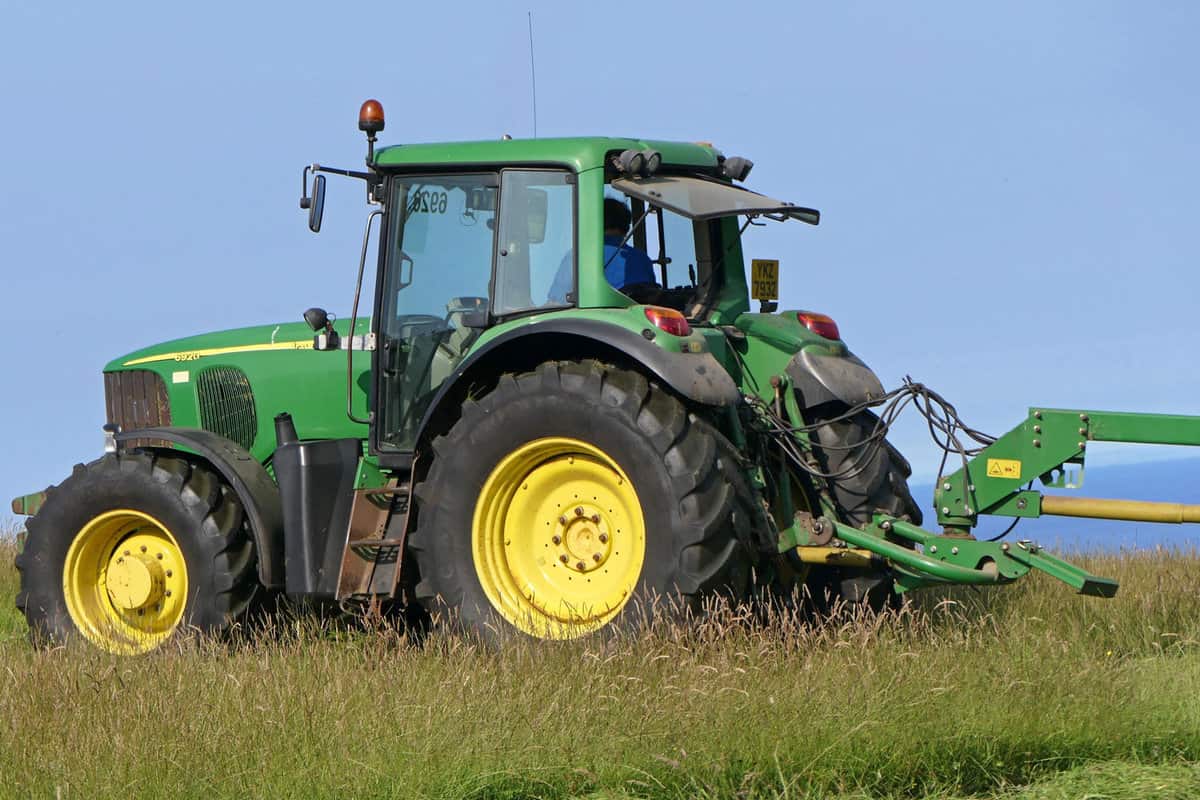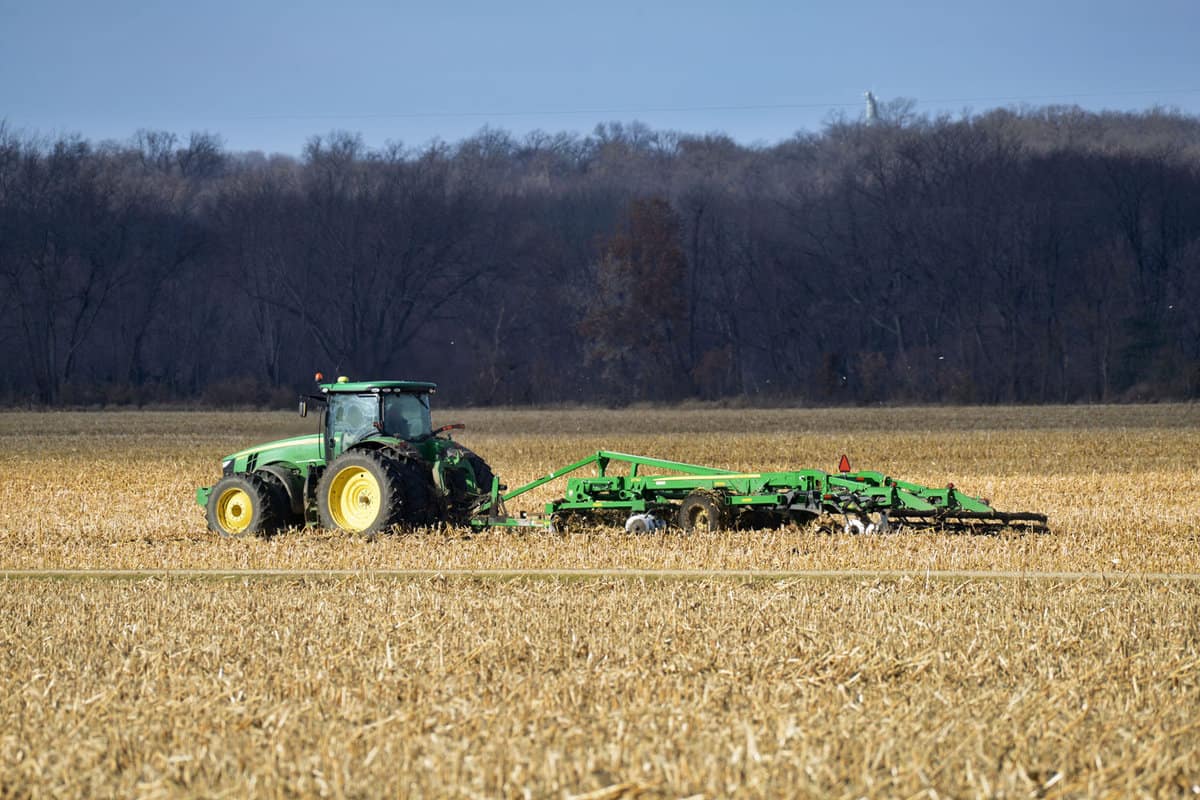Driving your John Deere tractor can become much harder if the cruise control stops working. Now, you're wondering why this feature failed. What can you do to restore its normal functions? We searched for answers to these concerns, and here's what we found.
A John Deere’s cruise control may fail because of reasons like a faulty MWFD sensor or a discharged battery. Make sure to troubleshoot the vehicle first. You can then use the appropriate solution based on your findings.
So continue reading as we talk about these possible reasons why a John Deere tractor’s cruise control isn’t working properly. We’ll also tackle a potential solution for each highlighted issue as you go through this post.
2 Reasons Why A John Deere Cruise Control Fails (And Their Possible Fixes)

Faulty MWFD Sensor
MFWD in a tractor generally stands for mechanical front-wheel drive. Certain John Deere tractors have this drivetrain as it provides 4x4 capabilities to the vehicles’ wheels.
Take note that the MFWD typically works with cruise control features. That also means that if the MFWD fails, the cruise control may also not work properly, if at all.
How To Fix
Replacing the MFWD sensor may help restore your John Deere tractor’s cruise control’s normal functions. But bear in mind that this replacement procedure usually requires users to have suitable confidence and know-how in dealing with tractors. If you aren't sure you're up to the task, think about requesting help from seasoned industry professionals.
But if you’re resolute in proceeding with this task, continue by following these general steps:
What You’ll Need

- Floor jack
- Panel remover
- Flathead screwdriver
- Drain pan
- Ratchet and socket
- Replacement MFWD sensor
Step-By-Step Guide
Step #1: Prepare The Tractor
Drive and park your John Deere tractor on a site with flat and level ground. Park the vehicle in a shaded area and well-ventilated area. Doing so should help remove some of the inconveniences associated with the job, such as direct sunlight exposure.
Step #2: Remove The Wheel
Place the floor jack underneath the recommended spot below your John Deere tractor. Next, raise the tractor’s rear side. You’ll know when to stop if the wheel assembly is slightly off the ground.
Loosen and remove the rear wheel’s cap with a pry bar. Next, lift and pull the newly exposed piece with a panel-removing tool. A flathead screwdriver may also work if you don’t have that tool ready.
Then, tap on the wheel assembly’s rear until it becomes loose. Once it’s loose enough, you should be able to remove the wheel from the tractor. Set it aside temporarily afterward.
Tip: Place a hockey puck between the floor jack and the tractor if you need the extra surface area for a safe lift.
Watch this reasonably short clip if you need help with this particular step:
Step #3: Drain The Transmission Fluid
Place a drain pan underneath the transmission fluid container of the John Deere tractor. Remove the container’s drain plug, which should allow the fluid to escape almost immediately. Wait for the container to become empty before returning the drain plug.
Step #4: Expose And Remove The MFWD Sensor
Loosen the bolts securing the transmission hose and remove them afterward. Next, remove the other fasteners that secure the transmission hose and set them aside temporarily.
At this point, you should have a clear view of the MFWD sensor. Disconnect the MFWD sensor afterward.
Note: Attempting to remove the MFWD sensor before draining the transmission fluid will result in a messy spill.
Step #5: New MFWD Sensor Installation And Test
Install the new MFWD sensor in the same location as the old unit. Make sure to connect the wires while following the correct orientation and placement.
Secure the new MFWD sensor in place and reconnect the transmission fluid hose. Refill the tractor with a fresh batch of transmission fluid and return its wheel assembly.
Lower the vehicle to the ground and turn on its engine. Allow the motor to run and be idle for at least 10 minutes, which should allow the engine control unit (ECU) to cycle and recognize the new sensor.
After that period, take your John Deere tractor for a test drive. Turn on its cruise control function and check if it now works correctly.
Check out this tractor transmission fluid on Amazon.
You can also watch this video for a visual guide to this procedure. The following clip also shows you how to replace a John Deere tractor's flywheel sensor, if you need the information for that concern:
Discharged Battery
Take note that the battery is generally responsible for providing and maintaining power for your John Deere tractor. So if the vehicle's battery is low on charge, you may encounter certain issues with it, including malfunctioning cruise control.
Other signs to look out for if your John Deere tractor’s battery is about to go out are:
• Difficulty or complete engine turnover failure • Visible signs of battery bulge and/or corrosion • Low voltage readings from the tractor’s electronics • Difficulty or failure to charge
How To Fix

Replacing the old battery in your John Deere tractor with a new unit may help recover its cruise control’s normal and optimal performance. It might also help get rid of other problems associated with the low battery.
Make sure to purchase the correct battery for your specific John Deere tractor model. Once you have the replacement unit, continue the process by following these steps:
What You’ll Need
- Ratchet and socket
- Wrench
- Vice grip
- Replacement battery
Step-By-Step Guide
- Park the tractor at a site with flat and level ground. Chock the wheels if necessary.
- Open the battery cover.
- Place the vice grip on the end opposite the bolt on the negative battery cable terminal.
- Loosen and remove the bolt on the negative battery cable.
- Repeat steps 3 and 4 for the positive battery cable and its terminal.
- Pull out the old battery from its mount.
- Install the new battery in the same location as the old unit while following the correct orientation.
- Connect and secure the positive cable to the correct terminal.
- Repeat the previous step for the negative cable.
- Close the battery cover and turn on the John Deere tractor’s engine.
- Inspect if the cruise control and the other tractor’s features are now working as intended.
Check out this replacement tractor battery on Amazon.
Warning: Prevent metal pieces from touching the battery’s surface as it may still hold a charge. If you do, you may receive a shock.
Note: Some of the steps highlighted in this procedure may not apply to your John Deere tractor. Consult the service manual or ask for help from the tractor manufacturer if you need additional guidance in replacing the vehicle's battery.
Watch this video if you need a visual representation of the steps mentioned above:
How Do You Set Cruise Control On A John Deere Tractor?

Understanding proper cruise control use on a John Deere tractor may help you in diagnosing its problems when certain issues arise. So follow these general steps if you need help in engaging the vehicle’s cruise control feature:
Step-By-Step Guide
- Drive your John Deere tractor to a preferred speed.
- Press the cruise control button on the dashboard or side panel to engage the feature.
- Disengage the cruise control by flipping its switch to the off position.
You can also watch the video below for a visual demonstration of a John Deere’s cruise control feature:
Does The John Deere S120 Have Cruise Control?
Cruise control is available in different John Deere tractor models, including the S120. It’s also available in the S120, S160, S170, and S180 units.
What Is The Best John Deere Tractor For Farming?

If your old John Deere tractor is giving you frequent problems, perhaps it’s time to replace it. Here are some excellent models from the same brand that might pique your interest:
- John Deere 6150R: Powerful small-chassis tractor with a large cab and superb suspension performance.
- John Deere 6155R: A mid-frame tractor with an excellent build quality and a comfortable cabin area.
- John Deere 6820: A reasonably inexpensive tractor compared to other John Deere models but still offers plenty of engine power for numerous farming activities.
Final Thoughts
Avoid using your John Deere tractor extensively as soon as you notice that its cruise control malfunctions or fails. Look for the main cause of this failure and use the appropriate DIY solution based on your troubleshooting results. You may also contact industry professionals if you think that repairing the tractor is too much for you to handle.
If you’re looking for answers to other John Deere concerns, check out these great posts:
My John Deere Won’t Start With A New Battery – Why? What To Do?


